Midway Atoll is a small group of islands located in the North Pacific Ocean that holds a unique and vibrant avian wildlife population. The islands are home to millions of birds, including albatrosses, petrels, terns, boobies, and frigatebirds.
These birds have made the atoll their breeding and nesting ground, where they spend the majority of their lives. The birds of Midway Atoll are highly adapted to the harsh marine environment, and their presence on the islands is a testament to the resilience and vitality of our natural world.
In this article, we will dive deeper into the rich world of Midway Atoll’s birdlife, and explore the fascinating behaviors and habitats of this diverse and colorful population.
1. Short-Tailed Albatross
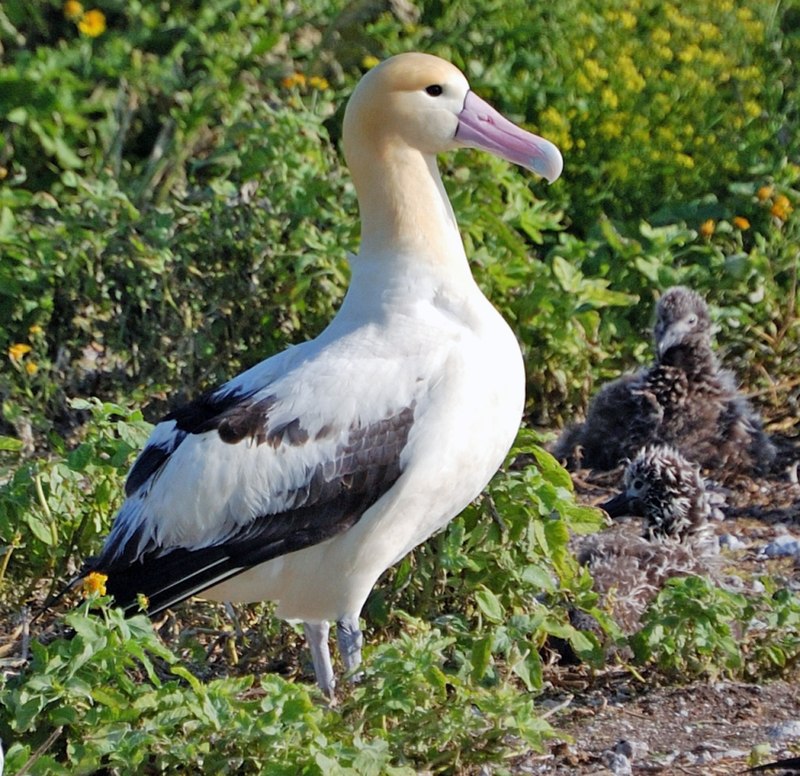
The Short-tailed Albatross, also known as Steller’s albatross (Phoebastria albatrus) is an impressive seabird that can be found in the North Pacific.
It has a unique combination of features from its Southern Ocean relatives combined with the behavioral and morphological traits of other North Pacific birds.
Described by German naturalist Peter Simon Pallas from skins collected by Georg Wilhelm Steller, it is now a rare species due to hunting and overfishing activities in its habitat.
With a white wingspan up to 3 meters long and black body plumage coloring them beautiful against blue skies, they are easy to identify when flying gracefully above waves or perched on rocks near shorelines looking for food.
Scientific classification:
| Kingdom | Animalia |
| Phylum | Chordata |
| Class | Aves |
| Order | Procellariiformes |
| Family | Diomedeidae |
| Genus | Phoebastria |
| Species | P. albatrus |
Also Featured In: Common Birds in Japan, White Birds Commonly Found in Hawaii
2. Brown Booby
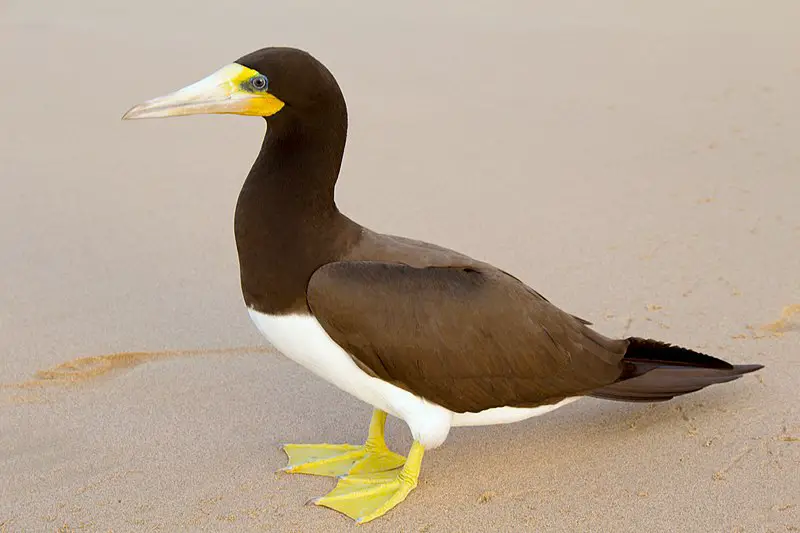
The Brown Booby is a large, seabird from the booby family Sulidae. It has a pantropical range and can be found in many areas of the world.
This bird lives in flocks and forages by plunging into shallow waters to catch small fish that are driven near the surface by predators or storms.
The brown booby is known for its short wings which make it highly maneuverable when hunting; this allows it to pursue prey quickly with sudden turns and dives.
Its diet also includes squid, crustaceans, eggs of other birds, as well as scraps from boats or ships they may come across while flying around coastlines.
They sometimes rest on floating objects during their long flights over open water between islands or continents.
Scientific classification:
| Kingdom | Animalia |
| Phylum | Chordata |
| Class | Aves |
| Order | Suliformes |
| Family | Sulidae |
| Genus | Sula |
| Species | S. leucogaster |
Also Featured In: Egyptian Birds, Birds that You’ll Find in Puerto Rico
3. Bonin Petrel
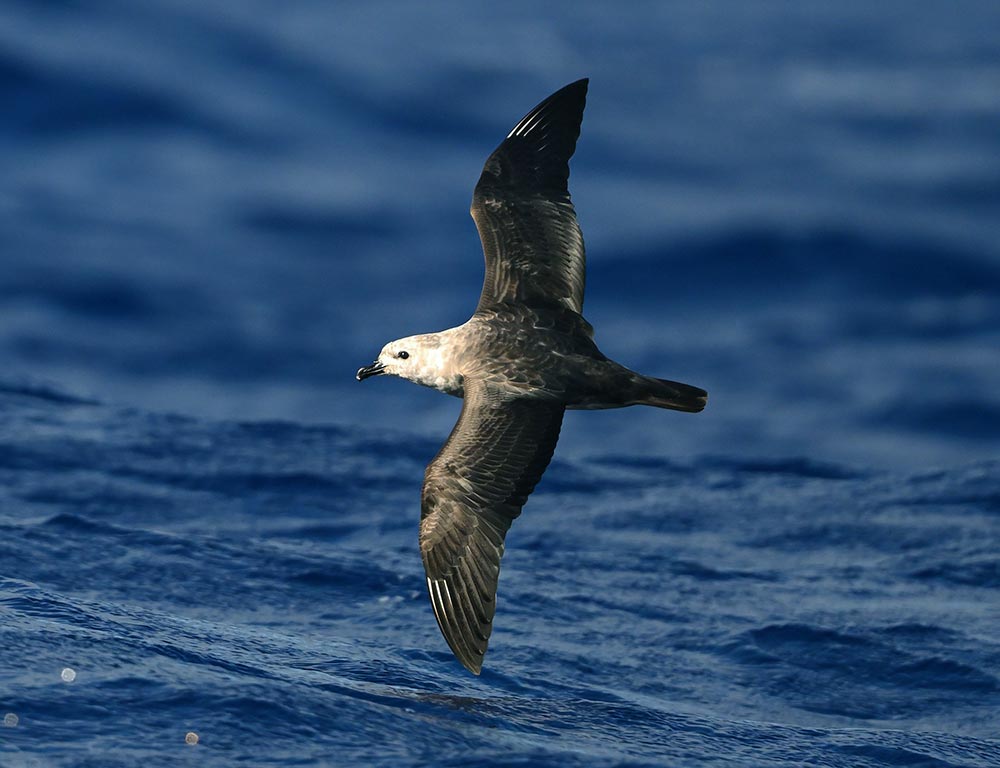
The Bonin Petrel, also known as Nunulu, is a small species of seabird belonging to the family Procellariidae. It typically resides in the northwestern Pacific Ocean and has been poorly studied due to its secretive habits and remote breeding colonies.
The bird was formally described by English naturalist Osbert Salvin in 1888 and can reach lengths up to 11 inches with an average wingspan of 22-26 inches.
Its body is mainly blackish-brown on top while white underneath with a distinctive dark M pattern across its upperparts.
Additionally, it features a yellow bill tip which distinguishes it from other petrels within the genus Pterodroma.
This unique species feeds largely on crustaceans such as squid or fish that they scavenge at night near surface waters; their diet often consists of carrion too.
As this fascinating bird continues to remain relatively unknown, further research needs to be done for us to learn more about these elusive creatures.
Scientific classification:
| Kingdom | Animalia |
| Phylum | Chordata |
| Class | Aves |
| Order | Procellariiformes |
| Family | Procellariidae |
| Genus | Pterodroma |
| Species | P. hypoleuca |
Also Featured In: Native South Korean Birds,
4. White-Tailed Tropicbird
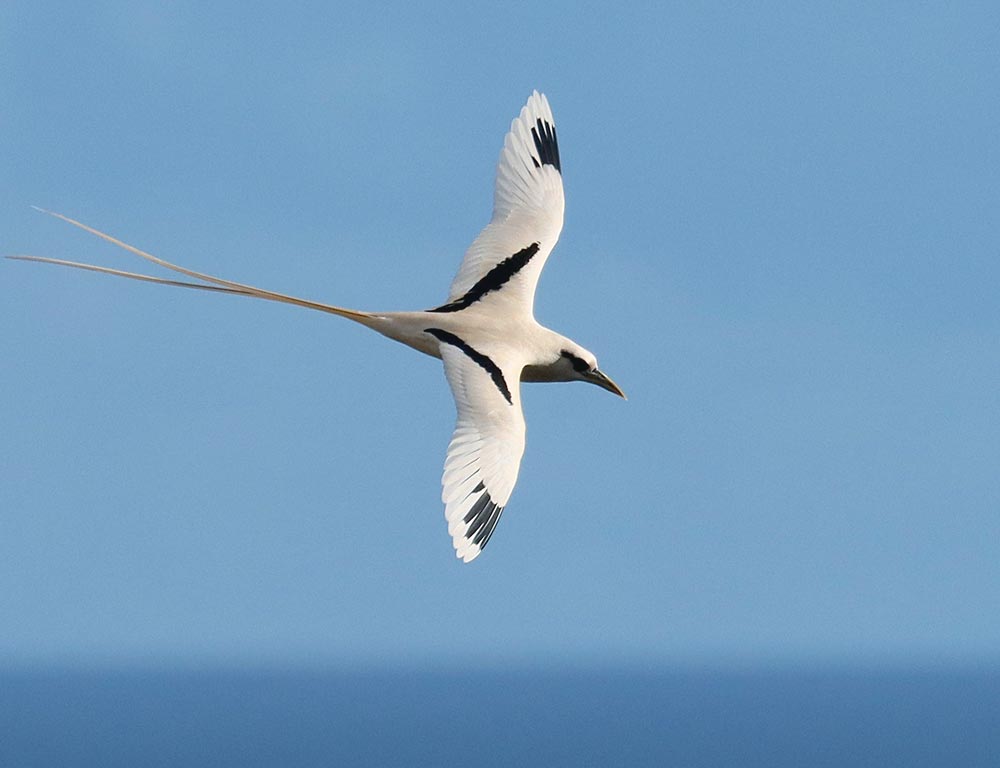
The White-tailed Tropicbird is a beautiful seabird that lives in the tropical waters of the Atlantic, Pacific, and Indian Oceans.
It is the smallest member of its order Phaethontiformes, measuring only 28 inches from head to tail.
Its wingspan can reach up to 45 inches wide. The bird has white plumage with black markings on its wings and tail feathers.
It also has an unmistakable long streamer which trails out behind them when they are in flight – a characteristic feature for all tropicbirds.
They nest mainly on remote islands throughout their range but have recently begun nesting on Little Tobago as well.
These birds feed primarily off flying fish or squid near the ocean’s surface during daylight hours before returning home at nightfall.
Scientific classification:
| Kingdom | Animalia |
| Phylum | Chordata |
| Class | Aves |
| Order | Phaethontiformes |
| Family | Phaethontidae |
| Genus | Phaethon |
| Species | P. lepturus |
Also Featured In: Mauritius birds, Birds of Kauai, Hawaii
5. Masked Booby
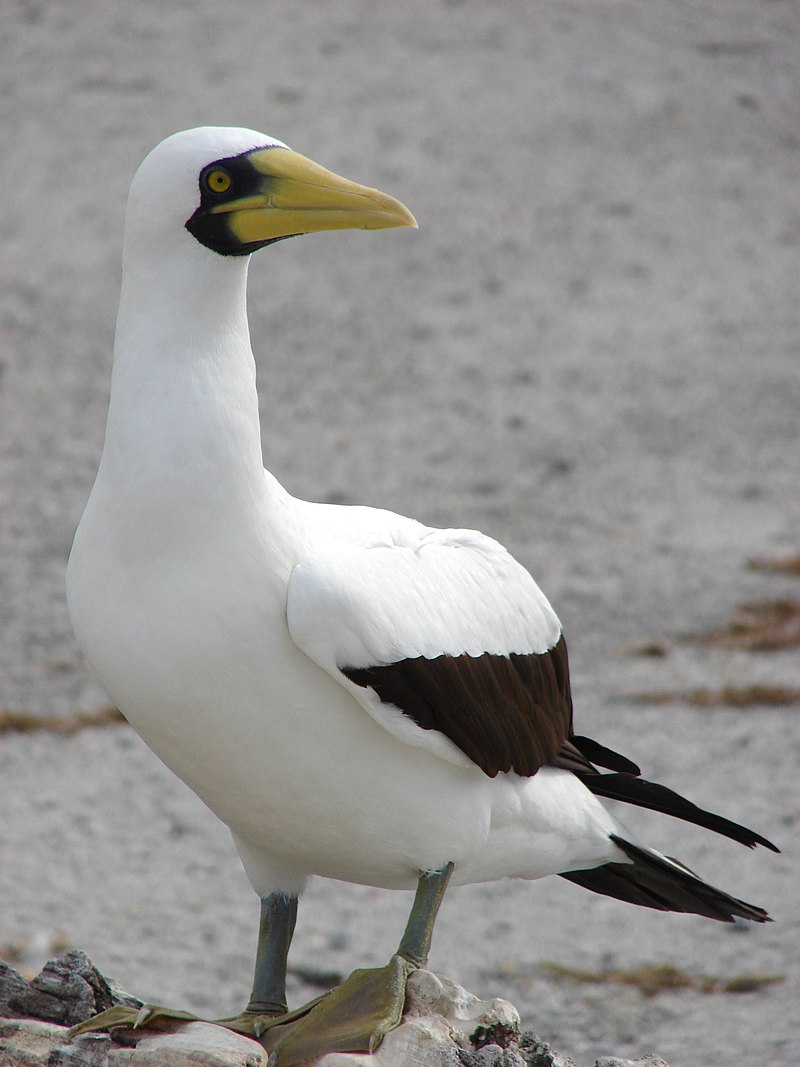
The Masked Booby is a large seabird belonging to the booby and gannet family. It was first described by French naturalist René-Primevère Lesson in 1831, making it one of six species of boobies within its genus Sula.
It has an impressive aerodynamic body shape with pale grey or white plumage on its head and neck, while the rest of its body is blackish brown.
Its wingspan can reach up to 1 meter wide. The bill is yellowish and pointed at the end, whilst they have bright blue skin around their eyes – this is why they are also known as ‘blue-faced’ boobies.
They use their strong wings to soar over oceans in search of fish which makes them excellent fishers who feed mainly on flying fish near tropical waters but can occasionally be found off coasts in temperate regions too.
Scientific classification:
| Kingdom | Animalia |
| Phylum | Chordata |
| Class | Aves |
| Order | Suliformes |
| Family | Sulidae |
| Genus | Sula |
| Species | S. dactylatra |
Also Featured In: Caribbean Birds, Most Common Oaxaca Birds
6. Brown Noddy
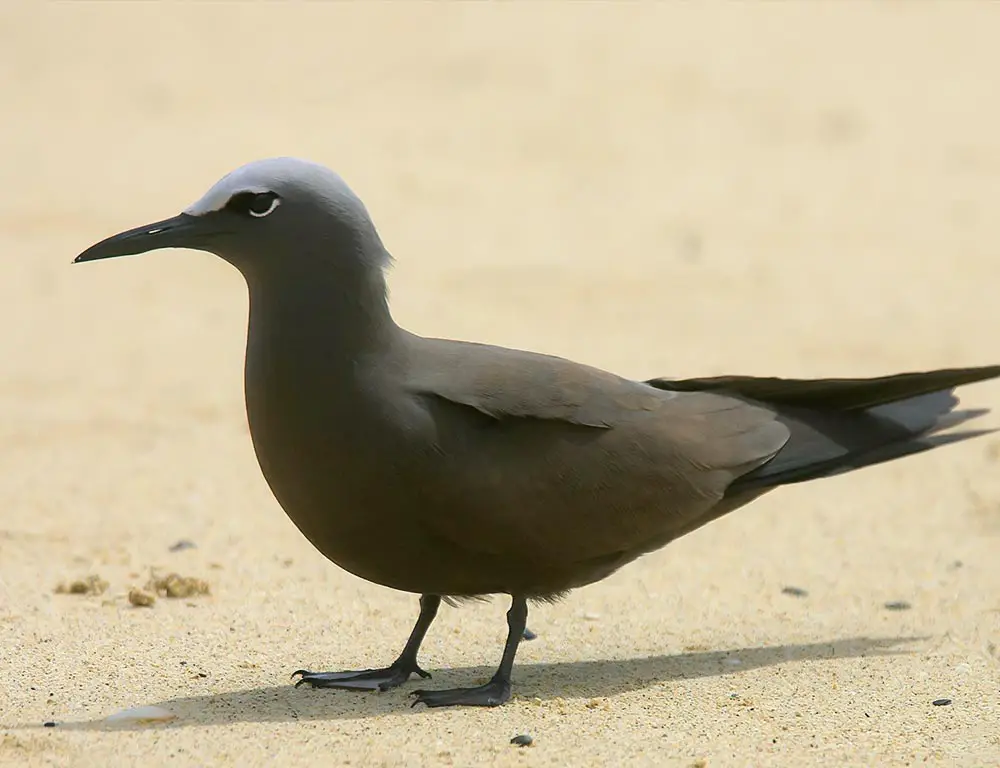
The Brown Noddy is a species of seabird in the Laridae family. It’s the largest of its kind and can be distinguished from others by its dark brown plumage, which stands out compared to other noddies with black feathers.
Found around tropical oceans worldwide, it inhabits areas such as Hawaii and Australia to the Tuamotu Archipelago in Polynesia.
During breeding season they form large colonies on remote islands where their nests are constructed using twigs and leaves situated atop trees or shrubs – typically located near water sources like lagoons or estuaries so they have access to food items like small fish and squid that make up their diet.
As highly social birds they often engage in synchronised flying displays over nesting sites before returning home at nightfall.
Scientific classification:
| Kingdom | Animalia |
| Phylum | Chordata |
| Class | Aves |
| Order | Charadriiformes |
| Family | Laridae |
| Genus | Anous |
| Species | A. stolidus |
Also Featured In: Brown Birds of Florida, Martinique Island Birds You Should Know
7. Red-Tailed Tropicbird
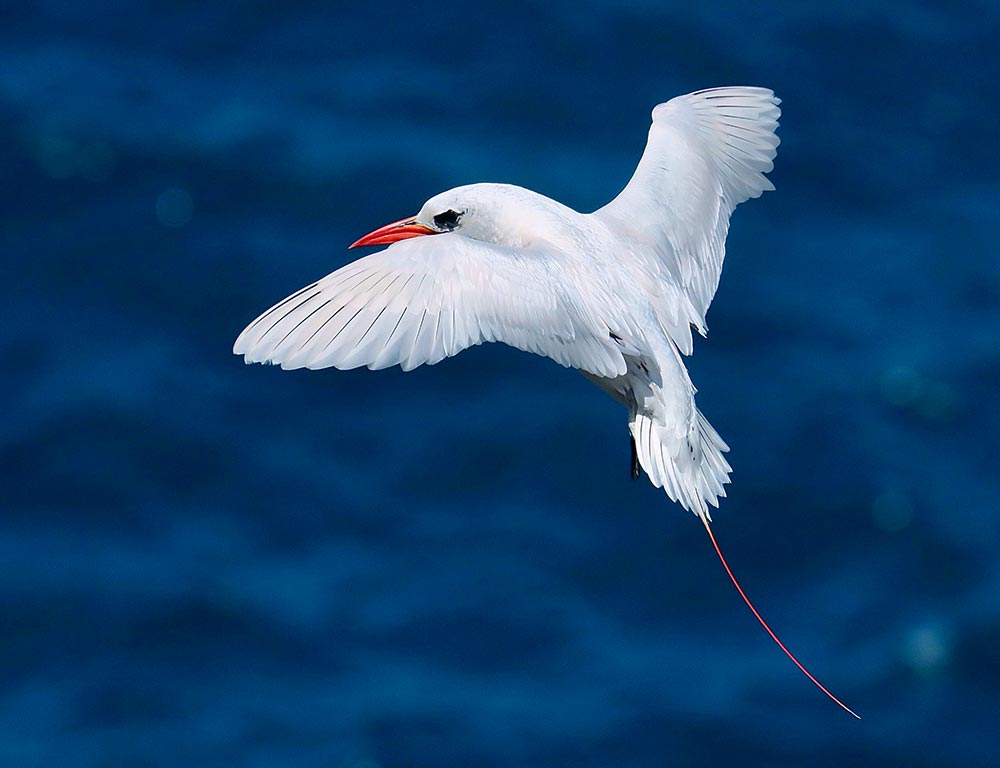
The Red-tailed Tropicbird is an exotic seabird found in tropical areas of the Indian and Pacific Oceans. It has a striking appearance, with mostly white feathers and a black mask covering its eyes.
Its bill is bright red, making it stand out against its pale plumage. Both males and females have similar looks to one another – unlike many other bird species where the male looks significantly different from that of the female.
Described by Pieter Boddaert in 1783, this impressive bird can be seen soaring through tropical skies looking for food either alone or within small flocks made up of several individuals at once.
Scientific classification:
| Kingdom | Animalia |
| Phylum | Chordata |
| Class | Aves |
| Order | Phaethontiformes |
| Family | Phaethontidae |
| Genus | Phaethon |
| Species | P. rubricauda |
Also Featured In: Common Republic of Nauru Birds, Birds that Live in Gold Coasts
8. Sooty Tern
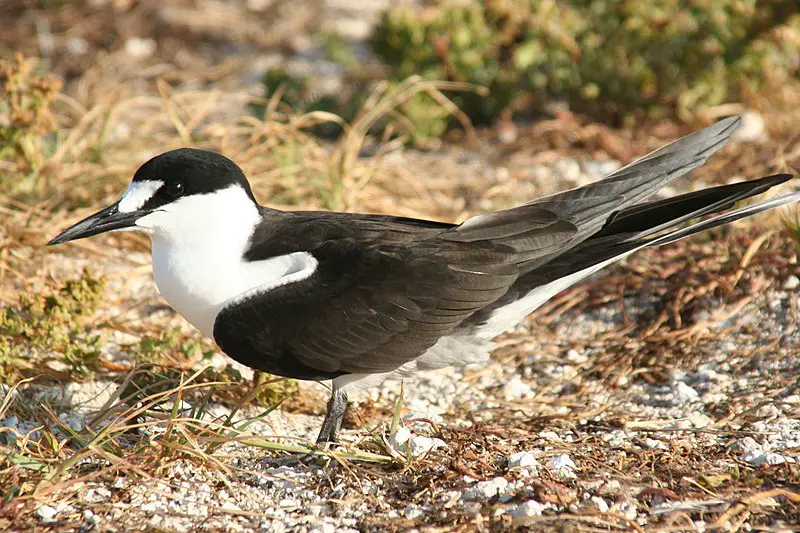
The Sooty Tern is a bird that lives in the tropics of all three major oceans. It is found mostly on remote islands where it returns to nest and breed during its seasonal journeys.
This member of the Laridae family has been described by Carl Linnaeus as Sterna fuscata, though more recently it was given its current name Onychoprion fuscatus.
The sooty tern has dark grey wings and back, with white underneath for camouflage against predators when flying over open ocean waters; they are also adept at diving underwater in search of food such as fish or crustaceans which make up their diet.
They live in colonies and usually lay two eggs each year which incubate for about four weeks before hatching into fluffy little chicks.
Scientific classification:
| Kingdom | Animalia |
| Phylum | Chordata |
| Class | Aves |
| Order | Charadriiformes |
| Family | Laridae |
| Genus | Onychoprion |
| Species | O. fuscatus |
Also Featured In: Maldives birds, Birds That Live in Ascension Island
9. Mottled Petrel
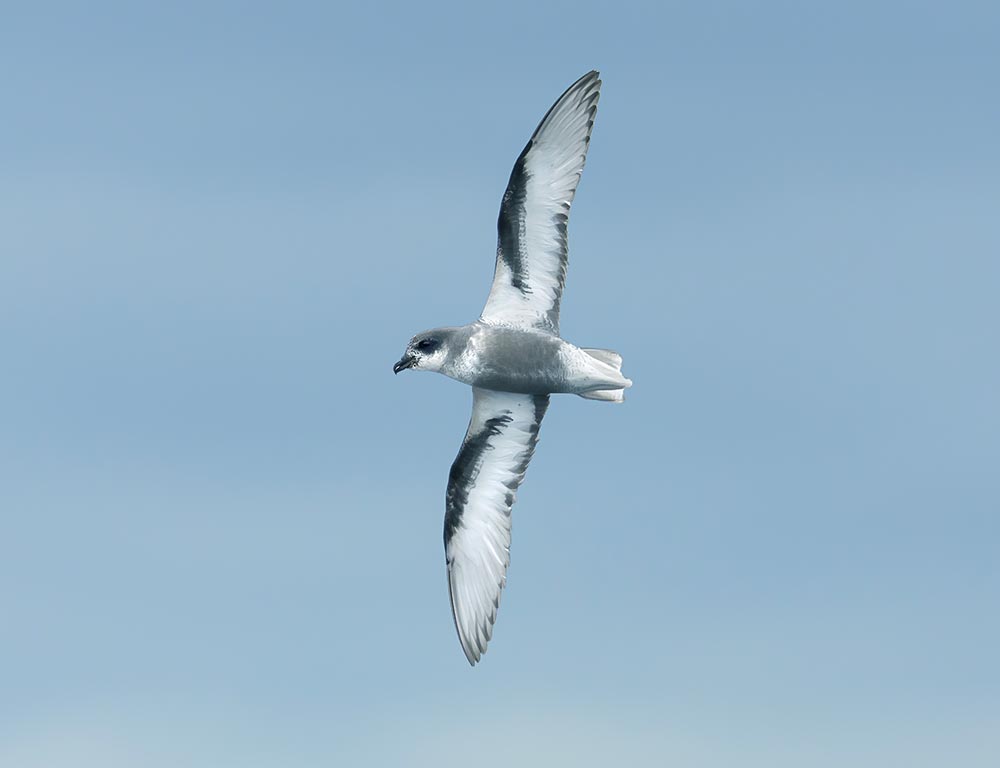
The Mottled Petrel, also known as the Kōrure, is a species of seabird found in oceans around the world. It has a wingspan of 29 to 32 inches and typically measures 13-14 inches long.
This bird prefers spending its time away from land except when it needs to nest or care for young. The diet consists mainly of fish and squid with some crustaceans thrown in occasionally.
As a transquatorial migrant, they spend summer months breeding on islands off New Zealand before migrating eastward across the Pacific Ocean towards North America during winter months.
They’re not particularly shy birds but despite their prevalence little is known about them due to how rarely they come ashore making studying these creatures challenging at best.
Scientific classification:
| Kingdom | Animalia |
| Phylum | Chordata |
| Class | Aves |
| Order | Procellariiformes |
| Family | Procellariidae |
| Genus | Pterodroma |
| Species | P. inexpectata |
Also Featured In: Kiribati Birds, Most Common Birds in Stewart Island
10. White Tern
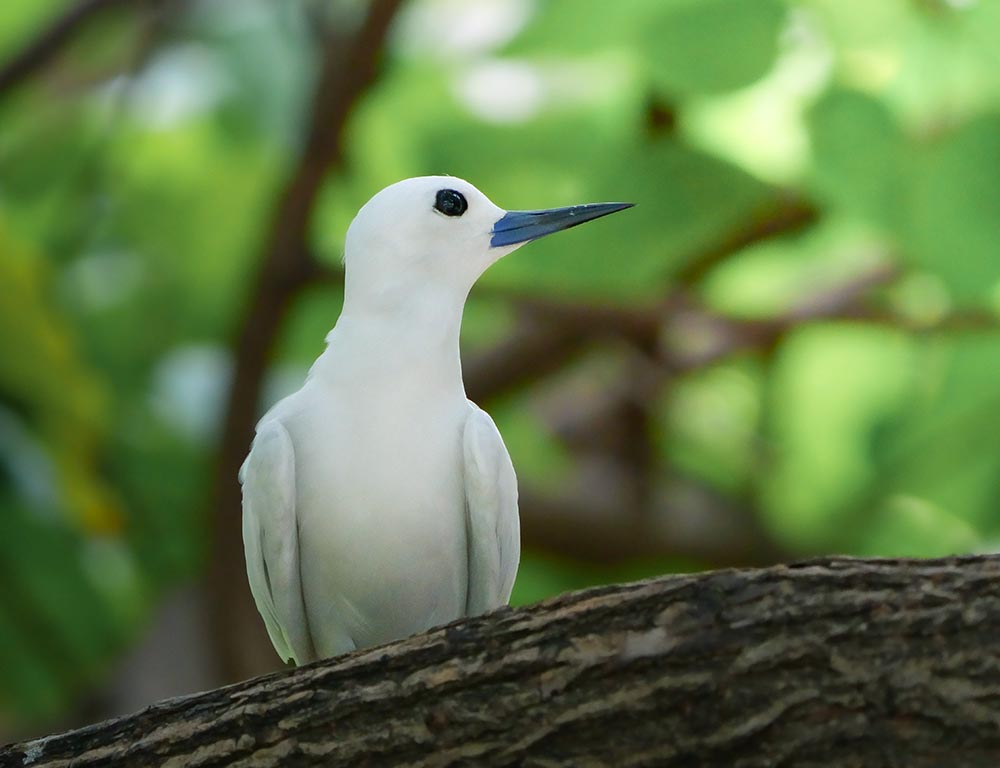
The White tern, also known as the common white tern or Fairy Tern, is a small seabird species found across tropical oceans all over the world.
Known for its elegance and beauty by humans and other animals alike, these birds are truly mesmerizing with their snow-white feathers.
They can be seen soaring in high altitudes or circling ships at sea looking for food. The Hawaiian name ‘manu-o-Kū’ translates to ‘bird of heaven’ which reflects how majestic this bird looks when it flies through the sky.
These lovely creatures often breed on isolated islands away from predators along with another smaller species called Little White Terns (Gygis microrhyncha).
Scientific classification:
| Kingdom | Animalia |
| Phylum | Chordata |
| Class | Aves |
| Order | Charadriiformes |
| Family | Laridae |
| Genus | Gygis |
| Species | G. alba |
Also Featured In: Seychelles birds, White Oahu Birds
11. Wedge-Tailed Shearwater
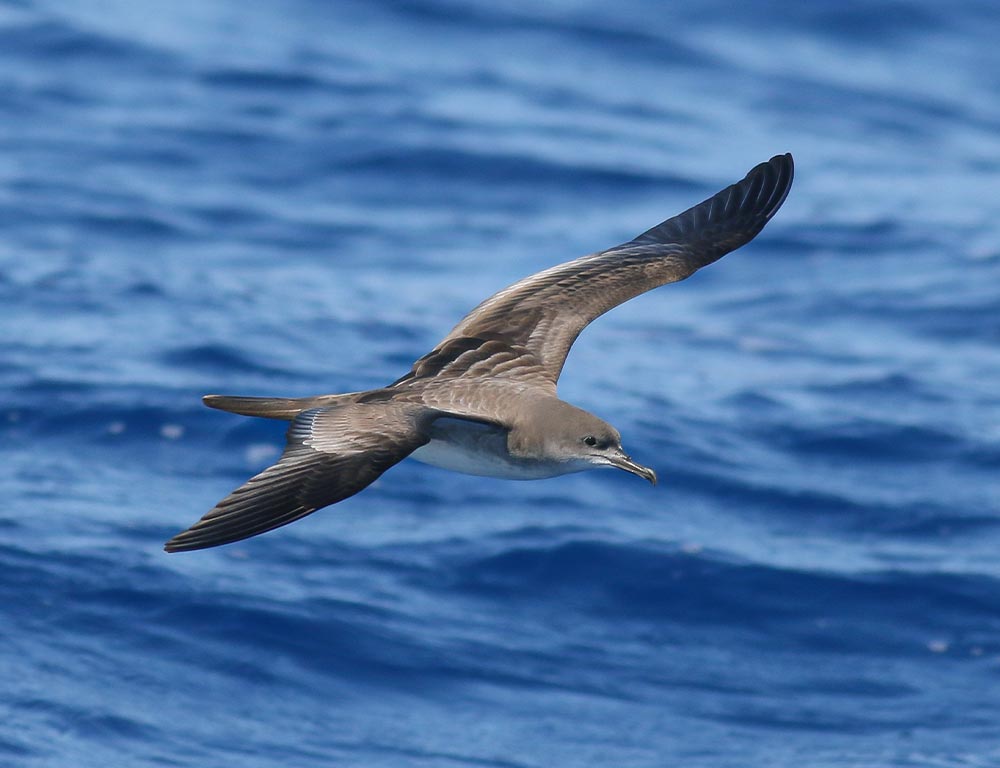
The wedge-tailed shearwater is a medium-large seabird found in the tropical Pacific and Indian Oceans. It is one of several species referred to as muttonbirds, along with the sooty and short-tailed shearwaters.
These birds have long wings that allow them to soar for extended periods over large bodies of water while searching for food such as fish, squid, crustaceans, cephalopods, and other marine invertebrates.
During mating season they nest on islands or small sandy beaches where both parents take turns caring for their chicks until they fledge at around two months old.
Wedge-tailed are an important part of many island cultures that traditionally hunt these birds during certain times of the year when populations peak due to migration patterns.
Scientific classification:
| Kingdom | Animalia |
| Phylum | Chordata |
| Class | Aves |
| Order | Procellariiformes |
| Family | Procellariidae |
| Genus | Ardenna |
| Species | A. pacifica |
Also Featured In: Welcome Islands Birds You Need To Know, Siargao Island Birds You Didn’t Know
12. Great Frigatebird
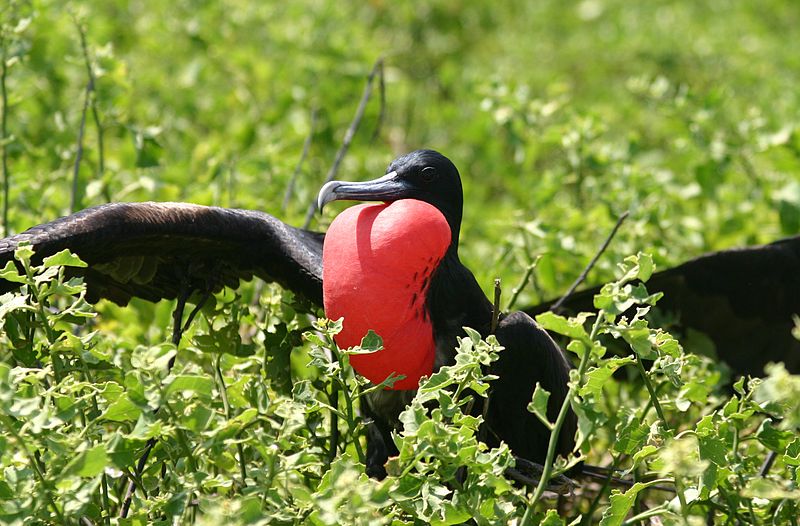
The Great Frigatebird is a large seabird found in tropical regions of the Pacific and Indian Oceans, as well as the South Atlantic.
It can grow up to 105 cm long with black plumage, making it one of the largest frigatebirds around.
The species also exhibits sexual dimorphism; males have bright red throat pouches while females have white or grey ones instead.
These birds nest in colonies on islands or near coastal areas where they feed off fish schools, squid, and other marine life that they snatch from their dive-bombing prey.
They are highly adept at soaring for hours above oceanic waters searching for food sources below them before diving down into shallow water to catch unsuspecting meals.
Scientific classification:
| Kingdom | Animalia |
| Phylum | Chordata |
| Class | Aves |
| Order | Suliformes |
| Family | Fregatidae |
| Genus | Fregata |
| Species | F. minor |
Also Featured In: Christmas Island Birds, Galapagos Birds You Should Know
13. Black Noddy
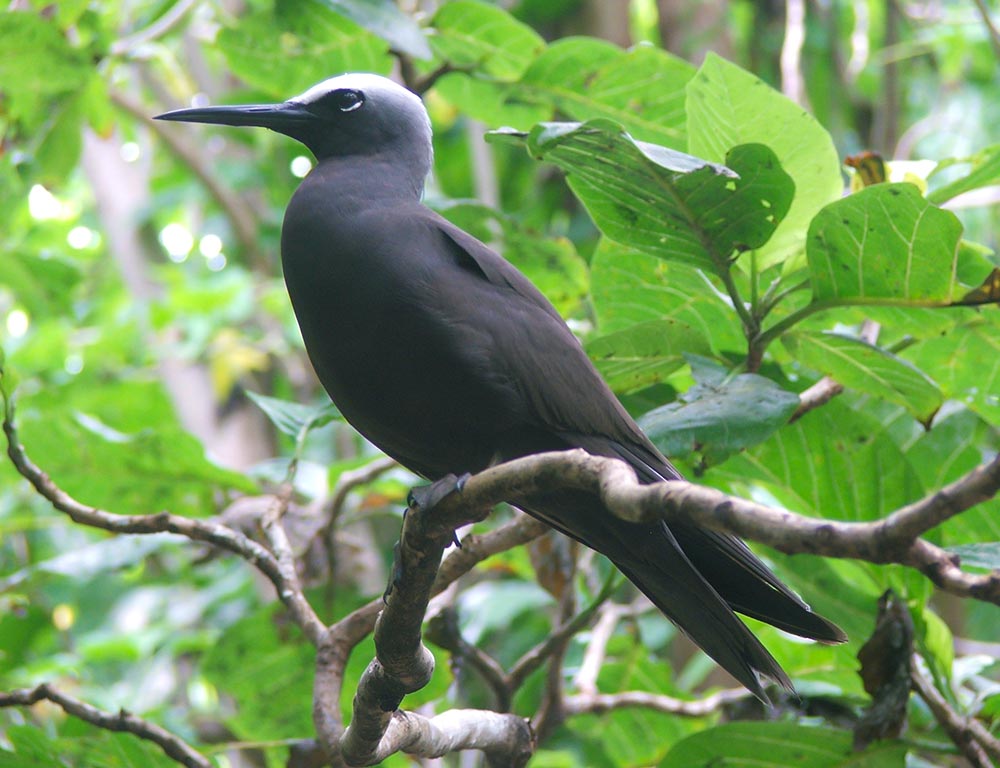
The Black Noddy bird is a medium-sized member of the Laridae family, identifiable by its black plumage and white cap.
It closely resembles the Lesser Noddy but has slightly darker feathers with dark lores instead of pale ones.
The species was first formally described in 1758, although it was previously considered to be part of Anous tenuirostris before being identified as a separate species.
They are usually found near tropical oceans or islands where they forage for food such as crustaceans, mollusks, and insects during the day.
At night, they roost on trees or shrubs close to shorelines while avoiding larger predators like sea eagles.
During breeding season females lay single eggs which both parents protect until hatching takes place around four weeks later.
Scientific classification:
| Kingdom | Animalia |
| Phylum | Chordata |
| Class | Aves |
| Order | Charadriiformes |
| Family | Laridae |
| Genus | Anous |
| Species | A. minutus |
Also Featured In: Cook Islands birds, Birds You’ll Find in the Marshall Islands
14. Christmas Shearwater
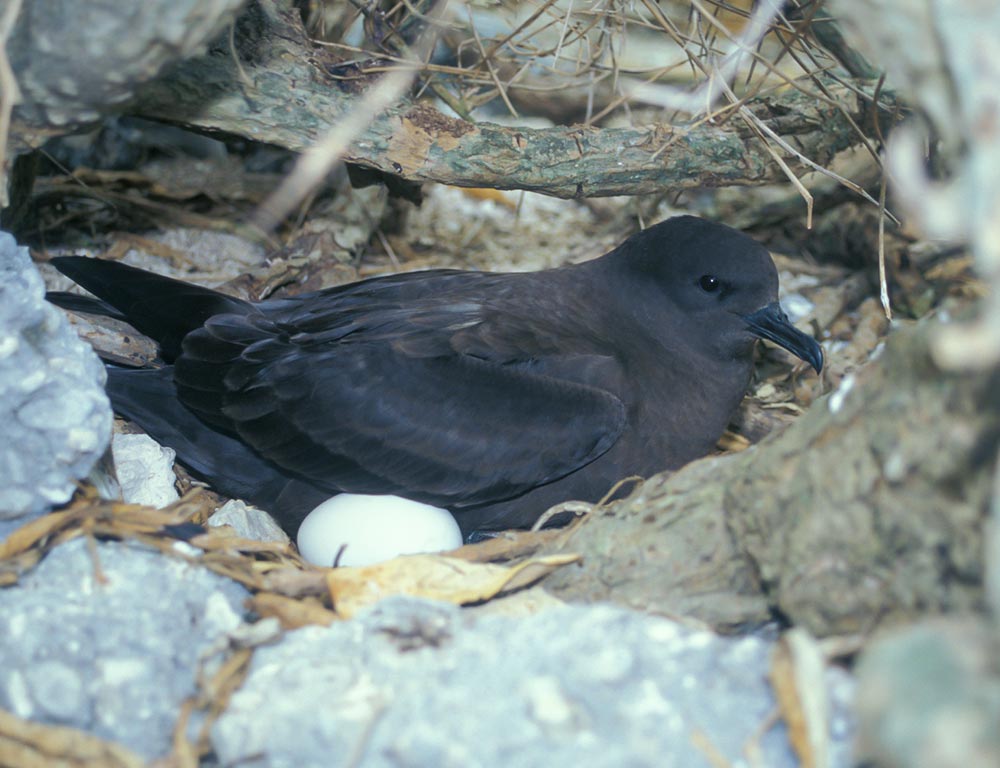
The Christmas Shearwater, also known as ‘Ao’u, is a medium-sized tropical bird found in the Central Pacific.
It belongs to an ancient species of small Puffinus shearwaters and its closest living relative is the Galápagos Shearwater.
Its remote nesting habits make it difficult to study and little information about this mysterious creature has been gathered until now.
The Christmas Shearwater typically flies low over the water at high speeds with quick wing beats, searching for food like fish or jellyfish near the surface of warm waters during nighttime hours.
These birds are capable of long-distance flights that span hundreds if not thousands of miles. With their unique white bellies and speckled black feathers on top, they stand out from other aquatic creatures.
Scientific classification:
| Kingdom | Animalia |
| Phylum | Chordata |
| Class | Aves |
| Order | Procellariiformes |
| Family | Procellariidae |
| Genus | Puffinus |
| Species | P. nativitatis |
Also Featured In: Most Common Oahu Birds, Easter Island Birds You Should Know
15. Murphy’s Petrel
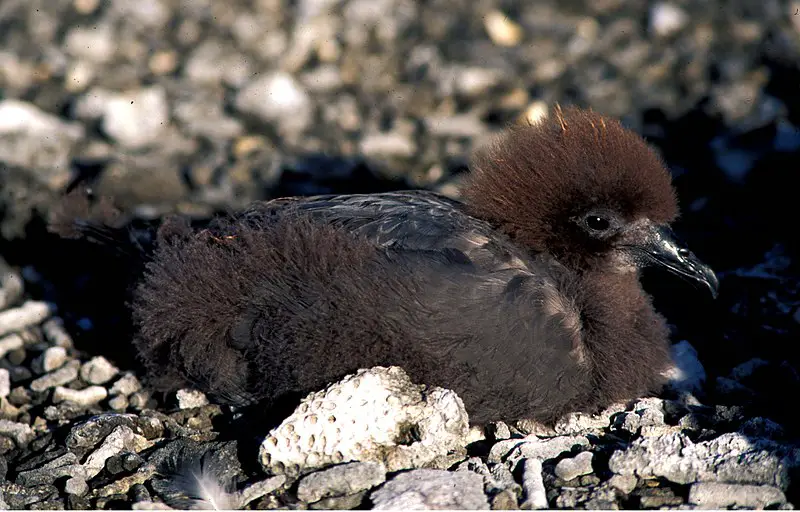
Murphy’s petrel is a species of seabird in the gadfly petrel family, measuring 15 inches long with a wingspan of 35 inches and weighing 13 ounces.
It was first discovered by Robert Cushman Murphy back in 1949 and has since been given its common name to honor him.
Not much is known about this bird; it wasn’t until the 1980s that researchers were able to determine how they lived their lives.
They typically inhabit tropical oceans where they can feed on squid, fish, crustaceans, and other marine life that make up their diet.
They use both land-based nests as well as burrows dug into cliffs or soil for breeding purposes during specific seasons throughout each year depending on location.
Murphy’s Petrel is a very unique-looking bird with blackheads, white bellies, and grey wings making them stand out from many other species of sea birds.
Scientific classification:
| Kingdom | Animalia |
| Phylum | Chordata |
| Class | Aves |
| Order | Procellariiformes |
| Family | Procellariidae |
| Genus | Pterodroma |
| Species | P. ultima |
Also Featured In: Beautiful Birds Found in Pitcairn Islands,
16. Laysan Albatross
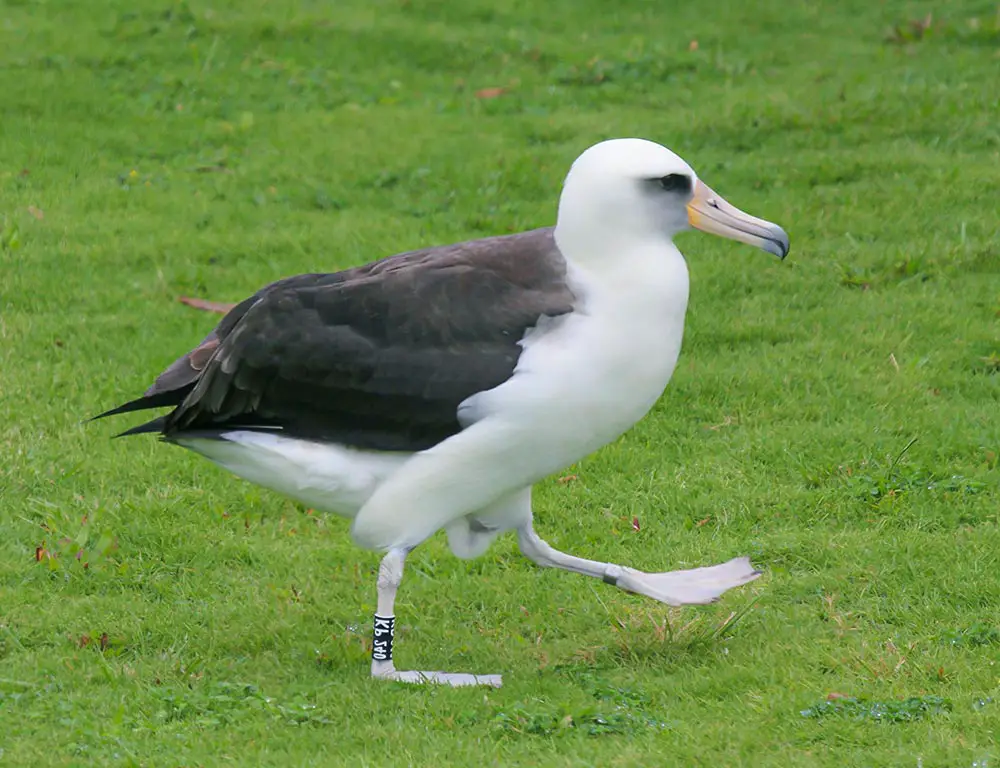
The Laysan albatross is a large seabird found in the North Pacific Ocean. Most of its population (99.7%) can be seen residing in the Northwestern Hawaiian Islands, where they form strong colonies and thrive in their natural habitat.
They are small for an albatross but still have distinguishable features such as long wingspans that help them soar gracefully above oceans while searching for food over great distances with ease.
It’s estimated to have 1.18 million birds worldwide and continues to expand or re-expand its range throughout other areas of the oceanic region too.
Scientific classification:
| Kingdom | Animalia |
| Phylum | Chordata |
| Class | Aves |
| Order | Procellariiformes |
| Family | Diomedeidae |
| Genus | Phoebastria |
| Species | P. immutabilis |
Also Featured In: Albatross Species, Birds You’ll Find in the Sea
17. Black-Footed Albatross
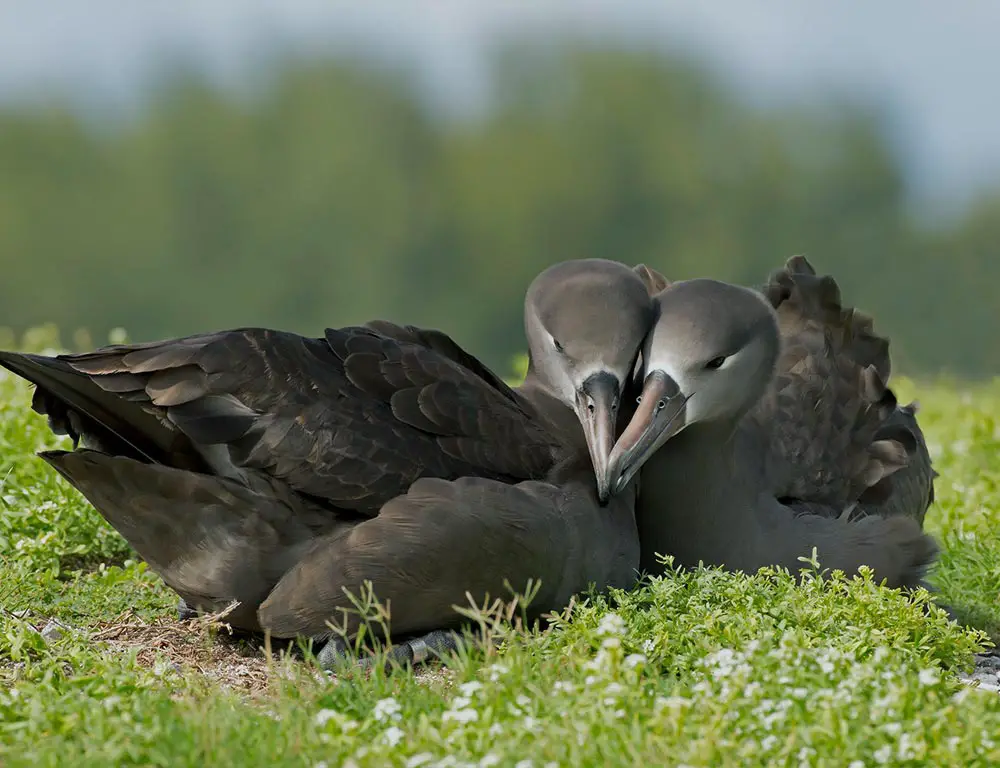
The black-footed albatross is a species of large seabird from the Diomedeidae family, found primarily in North Pacific coastal areas.
It is one of three species of northern hemisphere albatrosses and has dark plumage, unlike many others.
These birds are mostly located around the Northwestern Hawaiian Islands where they nest on isolated tropical islands.
The population numbers have been rapidly declining due to human activities such as fishing nets and plastic waste consumption which affects their food sources.
Conservation efforts must be made to protect these majestic creatures before it’s too late.
Scientific classification:
| Kingdom | Animalia |
| Phylum | Chordata |
| Class | Aves |
| Order | Procellariiformes |
| Family | Diomedeidae |
| Genus | Phoebastria |
| Species | P. nigripes |
Also Featured In: Birds that Live in the Ocean , Most Common Birds of Farallon Islands
18. Laysan Duck
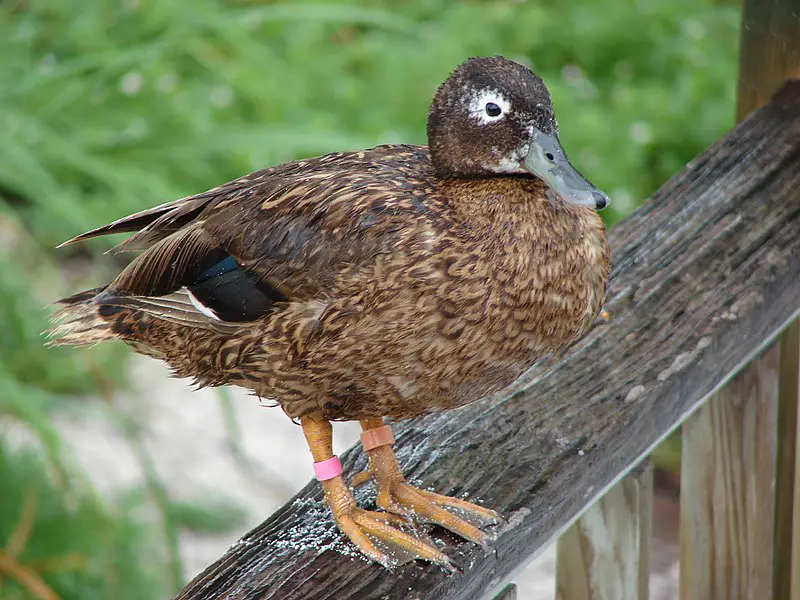
The Laysan duck is a unique bird species found exclusively in the Hawaiian Islands. It is also known as the Laysan teal due to its prominent dabbling behavior.
Fossil records indicate the Laysan duck once inhabited several islands in the archipelago, but it now exists in only three locations.
Interestingly, the duck possesses physical and behavioral characteristics that relate to its predator-free environment.
Unfortunately, due to human activity and other related factors, the duck experienced significant declines in its population, and by 1860, it was on the brink of extinction.
Consequently, conservation efforts were initiated to protect the remaining population.
Today, the Laysan duck is still considered a vulnerable species, but conservation efforts have enabled population recovery, and the bird is now in better shape than in previous years.
Scientific classification:
| Kingdom | Animalia |
| Phylum | Chordata |
| Class | Aves |
| Order | Anseriformes |
| Family | Anatidae |
| Genus | Anas |
| Species | A. laysanensis |
Also Featured In: Birds That Live In Laysan Island, Common Birds of Kauō
To Recap
Midway Atoll stands as a sanctuary and haven for 18 remarkable bird species, offering a glimpse into the astonishing diversity of avian life in this remote Pacific paradise.
From the charismatic Laysan Albatross to the rare and endangered Short-tailed Albatross, these birds find refuge amidst the pristine beauty of Midway’s coral reefs and lush vegetation.
The conservation efforts undertaken here not only safeguard these species but also emphasize the importance of preserving such critical habitats worldwide.
Midway Atoll serves as a poignant reminder of the delicate balance we must maintain to protect and cherish our planet’s natural wonders.